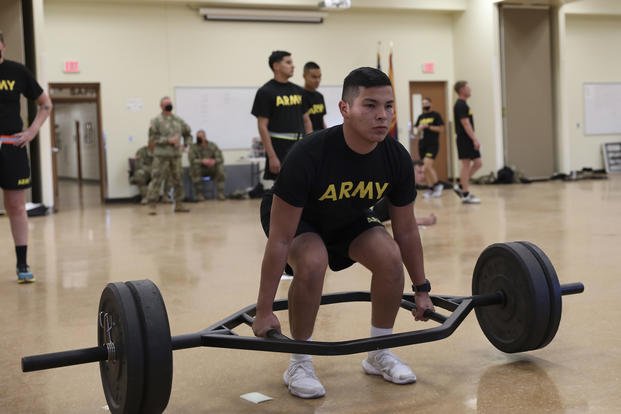During the past decade, a new fitness genre has been developed.
Fitness programming comes and goes over time, but rarely is an entirely new category created. This new type of fitness training is now called tactical fitness. What we once called military, police, firefighter and Special Ops fitness programs is now categorized into the ever-growing group of tactical fitness.
Even major strength, conditioning and personal training associations, like the National Strength and Conditioning Association (NSCA), have a program with a peer-reviewed journal and certification program for Tactical Strength and Conditioning (TSAC). So I do not see this genre losing ground like some overused concepts like boot-camp workouts and functional fitness.
What Is the Difference?
Tactical fitness is not about workouts; it's about work. It is not about working out to get good at working out. It is about creating programs that carry over into real-life movements, like lifts, carries, crawls, runs, rucks, swims and mobility, even analytical and creative thinking. It uses nontraditional equipment to lift and carry loads that are not balanced equally.
Tactical fitness is about choosing a profession where your fitness one day may be the difference between life and death for you, your buddy or someone you are trying to help. Not only does your health and fitness need to be developed, but your ability to react as you have been trained and think clearly under stress also is an absolute must.
Knowing how to be a team player is critical, too. Find workout buddies with similar goals and play sports to learn how to be part of a team. Your workout today must make you better tomorrow at your job. This means having a healthy heart, blood pressure, sugar levels and weight, as well as your workout helping you with the following elements of fitness:
-
Speed and endurance: Run and ruck farther and faster.
-
Strength and power: Lift equipment, gear and people, too.
-
Flexibility and mobility: Move easily over uneven terrain and between obstacles.
-
Muscle stamina: Move yourself and gear up, over, under and through space.
-
Old-man grip: Hold gear, climb a rope or mountain, and grab things and people without tiring.
-
Skills: Swim to save a life, to cross a river, meet up with a ship or sub for extraction, and to be effective on 75% of this planet.
-
And more: Anything and everything in your job.
Tactical Athlete vs. Average Athlete
It is possible to achieve excellent results with each of these elements of fitness. You will be naturally stronger and enjoy certain routines, but you also will have weaknesses. You have to determine what these weaknesses are in order to fix and improve them.
When you are a tactical athlete, training for all of these elements will not make you the strongest or fastest person in the country, but you will be well above average in strength and endurance, stamina and other areas.
It is very common for an advanced tactical athlete to be strong enough to do 20 pull-ups and deadlift two times his body weight of 200 or more pounds and still be able to run a six-minute mile pace for several miles.
Those are excellent numbers, but a cross country runner will beat you by a minute in a mile run but likely fail at strength events. The strong man will almost double your lift weights, but take a bus when the mile run is tested. The tactical athlete's definition of optimal is different than the normal single-focus athlete where certain fitness elements do not matter. They all matter to the tactical athlete.
Getting to and Through Training
There are specific stages for the tactical athlete in training. As a recruit or candidate, you have to score competitively to enter these public-service professions on what many refer to as the entrance exam. These are your typical fitness tests of pull-ups, push-ups, sit-ups, 1.5-mile runs and maybe a sprint or swim test, depending on the service for which you are training. Training to get to these boot camps, academies or Special Ops selection programs is one thing, but training to get through them is another.
Maintenance and Growth Cycles for Active Tactical Athletes
The post-training and active-duty worlds of a tactical athlete's profession are even more different. Your training year will require you to prepare for job specifics, and that may require you to run and ruck more, swim and dive more, or lift and sprint more. It all depends on what your mission skills will be.
Maintenance should be programmed in a way where you systematically stay strong, fast and well-conditioned in cardio, and flexible with periodic growth and peaking zones through the year. Learning about periodization is key to arranging workouts to help you with your job requirements in-country, overseas and seasonally in your community. It also keeps you healthy and injury free.
Stew Smith is a former Navy SEAL and fitness author certified as a Strength and Conditioning Specialist (CSCS) with the National Strength and Conditioning Association. Visit his Fitness eBook store if you're looking to start a workout program to create a healthy lifestyle. Send your fitness questions to stew@stewsmith.com.
Want to Learn More About Military Life?
Whether you're thinking of joining the military, looking for fitness and basic training tips, or keeping up with military life and benefits, Military.com has you covered. Subscribe to Military.com to have military news, updates and resources delivered directly to your inbox.


















